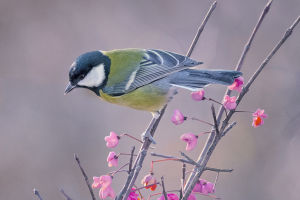According to media reports, you often see this scene in the park: squirrels darting up and down between branches, diligently burying nuts, and looking around, symbolizing the arrival of autumn.
As the weather turns colder and the leaves start to yellow, squirrels go into a frenzy, hoarding food for the upcoming winter. But have you ever wondered if their outdoor food storage is effective? After diligently hiding their winter reserves, how do they rediscover these foods, and when do they need them most?
First, let's backtrack a bit, as the way squirrels bury food can reveal some interesting clues. Animals that need to store food for the winter don't do it haphazardly: they typically employ one of two strategies. They either stash all their food in one place or spread it out across several different locations.
Most squirrel species adopt the strategy of dispersed food caching, so they exhibit different behavioral characteristics at various food-burying locations.
Dr. Miquel Maria Delgado, a postdoctoral researcher at the University of California, Davis School of Veterinary Medicine, says, "This type of food storage may have evolved because it reduces the risk of losing everything. In other words, the more widely distributed the food, the lower the risk of hungry competitors discovering all of a squirrel's food, and the lower the probability of the squirrel facing a food crisis."
A recent study published in the journal "Royal Society Open Science" suggests that squirrels organize and bury their cached food based on certain characteristics of the food, such as nut types, employing a chunking strategy. Additionally, the research indicates that in other species, this behavior helps animals categorize and manage cached food in their brains, which may aid in remembering the specific locations of their caches.
How do they cleverly find the hidden food? Studies show that, depending on the squirrel species and nut type, they can typically retrieve 95% of their hidden food, indicating that this process is not just luck. For a long time, it was believed that squirrels relied solely on smell to find food. While odors do enter the brain, increasingly more research suggests that memory plays a crucial role.
A groundbreaking study published in the journal "Animal Behaviour" in 1991 showed that even when multiple grey squirrels stash their food very close to each other, they still remember their cache locations very clearly and don't confuse them with those of their peers. Other studies have confirmed this, indicating that squirrels' spatial memory abilities help them map out their surroundings and locate food.
However, in certain specific situations, such as nuts buried under snow, their sense of smell may not help them find the food. Thus, squirrels may rely on other clues to locate food.
Delgado says, "While squirrels that scatter hoard food may use their sense of smell to locate cached food, they do remember these locations clearly. We don't know the exact mechanisms involved, but it may involve environmental spatial cues."
Researchers who have studied squirrel cognition for years note that based on observations, they use landmarks, memorize surrounding trees, and can gauge distances between themselves, trees, and their nests.
Delgado first observed this chunking behavior in squirrels' bodies, which could also provide memory cues for hiding food. He points out in the journal "Royal Society Open Science" that this approach could "reduce memory load," helping squirrels recall where they hid their food. While no one has directly tested the potential benefits of chunking analysis for squirrels, it is expected that future analysis will help uncover food cache locations.
Observers have noted that when squirrels scatter-store food in enclosed areas, they seem to remember the relative positions of stored food, indicating that squirrels can indeed use spatial memory to map out an accurate "food map."
Cunning squirrels always prepare more winter food than they need. The unutilized "reserve rations" quietly languish in the soil, eventually sprouting roots and initiating the subsequent cycle of life.

